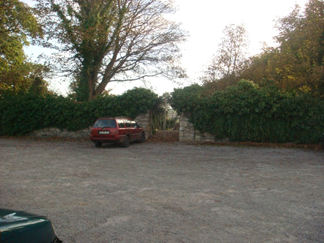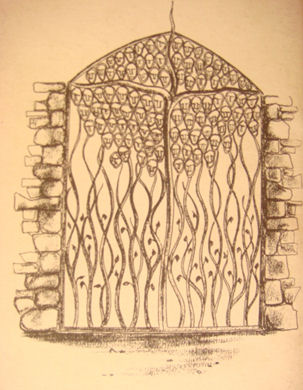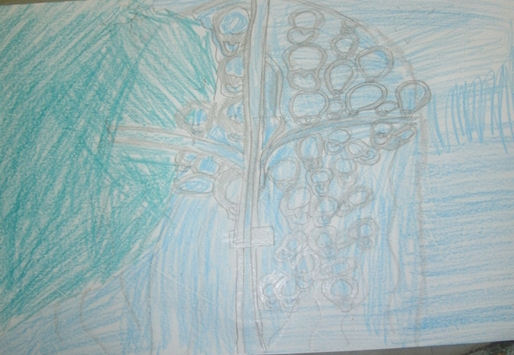 Famine Sites in Sligo - Burial Sites |
| by
St. Brendan's N.S. |
Page 1 | Activities | Famine Graveyard-Google MAP |
 "We
went for a trip to an old graveyard beside St. John’s Hospital in
Balltytivnan. The graveyard represents people that died during the
famine. There’s a sculpture of a tree located in the middle of the
graveyard." "We
went for a trip to an old graveyard beside St. John’s Hospital in
Balltytivnan. The graveyard represents people that died during the
famine. There’s a sculpture of a tree located in the middle of the
graveyard.""The graves were underground. There is a gate with about hundred skulls on it. It is to represent the people who passed away abroad during the famine. There is a children’s graveyard there too. " "We went on a trip to the famine graveyard. The thing that impressed me most was the very ornate gate. On closer inspection I noticed that it was made of interconnecting skulls. The skulls are too numerous to count. They represent all the nameless people buried here during the great hunger. It made me think of how hungry and malnourished the people became because of the lack of food." |
|||
 |
 |
||
 |
This Bronze Tree stands as a symbol
of dignity. It marks the final resting place of the un-named dead
of this area who perished in the great famine of 1845-1847. An Gorta Mor was like a never-ending winter. It’s chill of desolation brought, hunger, disease and death. In Ireland the lone tree or ‘Sceach’ was held in a position of high importance from early Celtic Mythology to recent times. The boulder stones surrounding the base allude to ancient forms of burial. “Mar sceach fe thathaint na gaoithe Ta m’anam a lubadh anocht” The sculptor of this tree is Fred Conlon the cousin of our classmate Cathal Conlon. |
 |
|
 This
is the Celtic Cross design in the children’s graveyard. This
is the Celtic Cross design in the children’s graveyard. It is made of stones, shells and sand. In the Famine Graveyard beside St. John’s Hospital there is a graveyard for adults and children but its not like any other graveyard. The people who were buried in this graveyard had no headstones. They were just put in the ground any where. People with money might have a headstone but very little. There are a lot of sculptures in the Famine graveyard. Why don’t you go have a look? |
|||